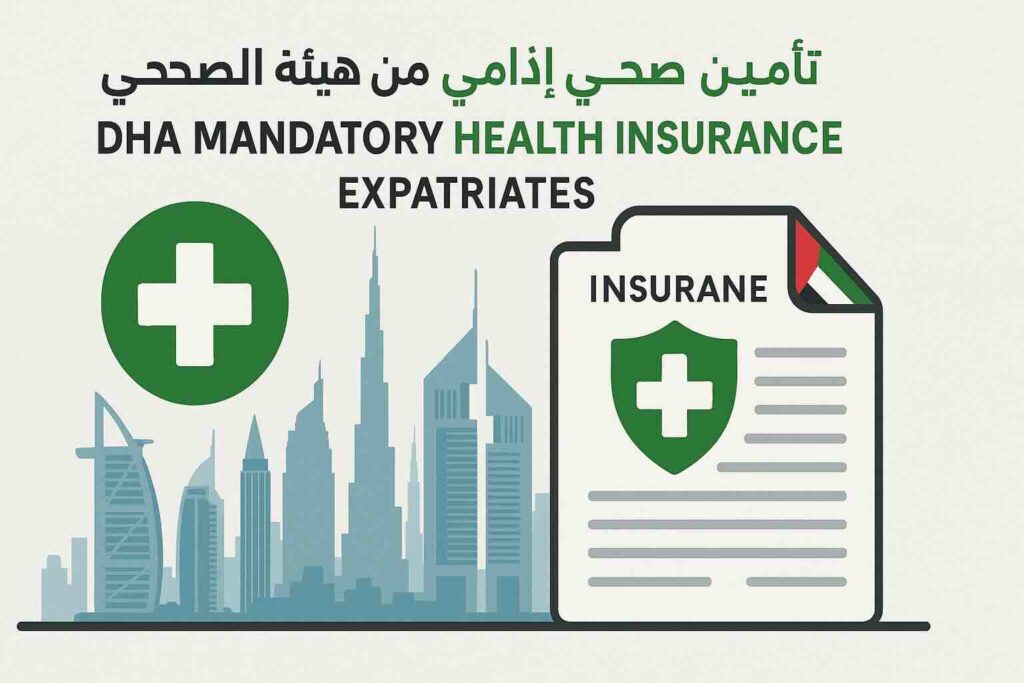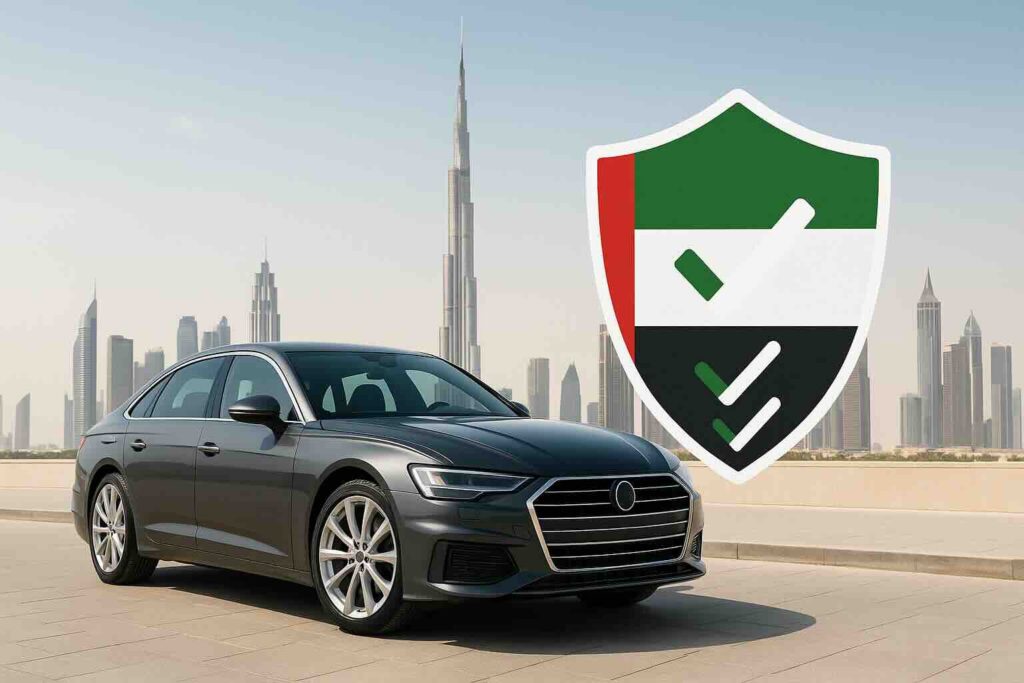Personal accident insurance in the UAE provides comprehensive financial protection against unexpected injuries, disabilities, and accidental death, offering coverage ranging from AED 50,000 to AED 5 million with benefits including medical expenses, disability compensation, hospitalization allowances, and family support – making it essential protection for UAE residents given the country’s active lifestyle and diverse workforce demographics.
Understanding Personal Accident Insurance in the UAE
Personal accident insurance serves as a crucial financial safety net for UAE residents, protecting individuals and families from the devastating economic impact of unexpected accidents. This specialized insurance coverage extends beyond basic health insurance, providing comprehensive benefits that address both immediate medical needs and long-term financial security following accidental injuries.
The UAE’s dynamic economy attracts millions of expatriate workers and entrepreneurs who engage in various professional and recreational activities, from construction and manufacturing to adventure sports and travel. This diverse lifestyle landscape creates multiple accident risks that standard health insurance policies may not adequately cover, making personal accident insurance an essential component of comprehensive financial planning.
Modern personal accident insurance policies in the UAE have evolved significantly, incorporating advanced coverage features that address contemporary lifestyle needs. These policies now include worldwide coverage, sports-related injuries, occupational hazards, and even cyber-related incidents, reflecting the changing risk profile of UAE residents in 2025.
Key Benefits of Personal Accident Insurance Coverage
Accidental Death Benefits
Accidental death coverage represents the cornerstone of personal accident insurance, providing substantial financial support to beneficiaries when the policyholder dies due to covered accidents. UAE insurers typically offer death benefits ranging from AED 100,000 to AED 5 million, with premium policies extending coverage up to AED 10 million for high-net-worth individuals.
The accidental death benefit activates immediately upon verification of accidental death, providing families with crucial financial resources during emotionally challenging times. This coverage extends to various accident scenarios, including traffic incidents, workplace accidents, natural disasters, and recreational activity injuries, ensuring comprehensive protection across different life situations.
Beneficiary designation flexibility allows policyholders to allocate death benefits among multiple recipients, including spouses, children, parents, and other dependents, creating customized financial support structures that align with individual family circumstances and cultural preferences common in UAE’s multicultural society.
Permanent Disability Compensation
Permanent disability benefits provide ongoing financial support when accidents result in irreversible physical or mental impairments that prevent individuals from maintaining their previous earning capacity. UAE personal accident policies typically classify permanent disabilities into complete and partial categories, with compensation percentages ranging from 25% to 100% of the sum insured.
Complete permanent disability coverage addresses total incapacitation scenarios, including paralysis, complete vision loss, severe brain injuries, and multiple limb amputations. These benefits often match the full death benefit amount, recognizing that permanent disability can create greater long-term financial burdens than accidental death due to ongoing care requirements and income loss.
Partial permanent disability benefits calculate compensation based on specific injury assessments, using standardized medical evaluation criteria to determine appropriate benefit levels. Common partial disabilities include single limb amputations, partial vision loss, hearing impairment, and cognitive function reduction, with benefits calculated proportionally to functional capacity loss.
Temporary Disability Income Support
Temporary disability coverage provides crucial income replacement during recovery periods when accidents prevent individuals from working but don’t result in permanent impairment. This benefit typically covers 50% to 80% of regular income, with maximum weekly payments ranging from AED 1,000 to AED 10,000 depending on policy terms and premium levels.
The temporary disability benefit period varies among UAE insurers, with standard policies providing coverage for 12 to 52 weeks, while comprehensive policies may extend benefits up to 104 weeks for severe injuries requiring extended rehabilitation. This coverage bridges the financial gap between accident occurrence and return to work, maintaining household financial stability during recovery.
Qualification for temporary disability benefits requires medical certification confirming work incapacity due to covered accidents, with regular medical reviews ensuring appropriate benefit continuation. Progressive return-to-work programs may provide partial benefits when individuals gradually resume professional activities at reduced capacity levels.
Medical Expense Reimbursement
Comprehensive medical expense coverage addresses immediate and ongoing healthcare costs resulting from covered accidents, including emergency treatment, surgical procedures, hospitalization, rehabilitation services, and prescription medications. UAE personal accident policies typically provide medical coverage ranging from AED 25,000 to AED 500,000 annually.
Emergency medical transportation benefits cover ambulance services, helicopter evacuation, and international medical repatriation when accidents require specialized treatment unavailable locally. This coverage proves particularly valuable for UAE residents who travel frequently for business or leisure, ensuring access to appropriate medical care regardless of accident location.
Rehabilitation and physiotherapy coverage supports recovery processes through specialized treatment programs, occupational therapy, and adaptive equipment provision. These benefits recognize that accident recovery often requires extended therapeutic interventions beyond initial medical treatment, supporting comprehensive healing and functional restoration.
Hospitalization Daily Allowance
Daily hospitalization allowances provide additional financial support during inpatient treatment periods, covering incidental expenses not addressed by primary medical coverage. These benefits typically range from AED 100 to AED 1,000 per day, with maximum benefit periods extending from 30 to 365 days depending on policy specifications.
Hospitalization allowances help manage accommodation costs for family members, transportation expenses, communication needs, and other personal requirements during extended hospital stays. This coverage proves particularly valuable for expatriate families whose support networks may be geographically distant, requiring additional resources during medical emergencies.
Intensive care unit benefits often provide enhanced daily allowances recognizing the increased costs associated with critical care situations. These elevated benefits may double or triple standard hospitalization allowances, reflecting the significant financial impact of serious accident scenarios requiring specialized medical intervention.
Coverage Scope and Inclusions
Geographic Coverage Territories
Modern UAE personal accident insurance policies provide extensive geographic coverage addressing the international lifestyle patterns of many residents. Worldwide coverage options ensure protection during business travel, vacation trips, and temporary relocations, maintaining consistent accident protection regardless of location.
Regional coverage packages focus on Middle East and North Africa territories, providing cost-effective protection for individuals whose travel patterns remain within familiar geographic regions. These policies often include enhanced benefits for specific countries with established healthcare partnerships, optimizing treatment access and cost management.
Domestic-only coverage options serve residents with limited travel requirements, offering comprehensive UAE protection at reduced premium costs. These policies maintain full benefit levels for in-country accidents while excluding international coverage components, creating budget-friendly options for cost-conscious consumers.
Activity and Occupation Coverage
Professional occupation coverage addresses workplace accident risks across various industry sectors, from office environments to high-risk occupations including construction, aviation, maritime operations, and oil industry positions. Specialized occupational policies provide enhanced benefits recognizing elevated accident probabilities in certain professional contexts.
Sports and recreational activity coverage extends protection to adventure sports, extreme activities, and competitive athletics that standard policies might exclude. UAE’s active lifestyle culture, including desert adventures, water sports, and winter sports travel, creates demand for comprehensive recreational accident coverage.
Hazardous activity exclusions vary among insurers, with some policies excluding extreme sports, professional athletics, military service, and certain occupational activities. Understanding these exclusions ensures appropriate coverage selection and may necessitate specialized policy additions or alternative insurance arrangements.
Age and Health Considerations
Age-based coverage limitations typically restrict new policy enrollment to ages 18-65, with renewal options extending coverage until age 70-75 depending on insurer policies. Senior-specific accident insurance products address the unique needs of older adults, often with modified benefit structures and premium calculations.
Pre-existing medical condition handling varies significantly among UAE insurers, with some policies excluding coverage for accidents related to known health conditions while others provide modified coverage with waiting periods or reduced benefits. Transparent health disclosure during application processes ensures appropriate coverage determination and prevents claim disputes.
Family coverage options allow comprehensive household protection through single policies covering spouses and dependent children, often providing cost savings compared to individual policy arrangements. Family policies typically include age-appropriate benefit levels and may extend coverage for children studying abroad or young adults transitioning to independent living.
Claim Process and Requirements
Immediate Accident Reporting
Prompt accident notification represents a critical claim requirement, with most UAE insurers mandating initial reports within 24-48 hours of accident occurrence. Emergency hotlines provide 24/7 claim initiation services, ensuring immediate access to claim processes regardless of timing or location circumstances.
Initial claim documentation should include accident details, medical treatment information, police reports when applicable, and preliminary injury assessments. Digital claim submission platforms streamline the reporting process, allowing policyholders to submit initial information and supporting documents through mobile applications or online portals.
Claim reference numbers provided during initial reporting facilitate ongoing communication and documentation tracking throughout the claim evaluation process. These reference systems ensure efficient claim management and provide policyholders with clear progress monitoring capabilities during benefit determination periods.
Medical Documentation Standards
Comprehensive medical documentation forms the foundation of successful personal accident insurance claims, requiring detailed injury assessments, treatment records, and prognosis evaluations from qualified healthcare providers. UAE insurance regulations establish specific medical reporting standards ensuring consistent claim evaluation processes.
Specialist medical evaluations may be required for complex injuries, permanent disability assessments, or disputed claims, with insurers maintaining networks of approved medical professionals for independent assessments. These evaluations provide objective injury evaluations supporting fair benefit determinations based on standardized medical criteria.
Ongoing medical monitoring documentation supports temporary disability claims and rehabilitation benefit requests, requiring regular medical updates confirming treatment progress and work capacity assessments. These requirements ensure appropriate benefit continuation and support evidence-based return-to-work determinations.
Benefit Calculation Methods
Death benefit calculations typically involve straightforward sum insured payments to designated beneficiaries, with additional considerations for multiple beneficiary distributions and legal succession requirements under UAE inheritance laws. Clear beneficiary designation and documentation prevent payment delays and family disputes during difficult circumstances.
Disability benefit calculations require detailed medical assessments determining impairment percentages based on standardized evaluation criteria. These assessments consider functional capacity loss, earning potential impact, and quality of life factors in establishing appropriate compensation levels aligned with policy terms.
Income replacement calculations for temporary disability benefits consider pre-accident earnings, employment patterns, and applicable benefit percentages to determine appropriate weekly or monthly payments. Documentation requirements include employment verification, salary statements, and tax records supporting income calculations.
Premium Factors and Pricing Structure
Risk Assessment Variables
Age represents a primary premium determination factor, with younger policyholders typically receiving lower rates reflecting reduced accident probabilities and better recovery prospects. Premium increases generally accelerate after age 45-50, with significant rate adjustments for coverage extending beyond traditional retirement ages.
Occupational risk classifications significantly impact premium calculations, with office workers receiving standard rates while high-risk occupations including construction, aviation, and industrial positions face substantial premium increases. Some extremely high-risk occupations may require specialized coverage through surplus lines insurers.
Lifestyle factors including sports participation, travel patterns, and recreational activities influence premium determinations, with insurers using detailed questionnaires to assess individual risk profiles. Adventure sports enthusiasts, frequent travelers, and extreme activity participants typically face higher premiums reflecting elevated accident probabilities.
Coverage Amount Selections
Sum insured options in the UAE personal accident market range from basic AED 50,000 policies suitable for young adults with limited financial obligations to comprehensive AED 5 million policies designed for high-income professionals with substantial family responsibilities. Premium costs increase proportionally with coverage amounts, though per-AED costs often decrease at higher coverage levels.
Benefit customization options allow policyholders to adjust coverage components based on individual needs and budget constraints. Some individuals prioritize maximum death benefits while others emphasize disability income replacement or medical expense coverage, creating personalized protection profiles aligned with specific circumstances.
Annual versus lump-sum premium payment options provide flexibility in policy management, with annual payments offering cash flow advantages while lump-sum payments may provide modest premium discounts. Multi-year policy commitments sometimes include rate guarantees protecting against future premium increases during the commitment period.
Discount Opportunities
Group coverage discounts through employers, professional associations, or affinity organizations can provide substantial premium savings, often ranging from 10-25% compared to individual policy rates. These group arrangements leverage collective bargaining power and reduced administrative costs to achieve favorable pricing.
Multi-policy discounts reward customers who maintain multiple insurance products with the same insurer, potentially including auto, property, health, and life insurance combinations. These relationships often qualify for premium reductions and may include enhanced service benefits reflecting customer loyalty.
Claims-free discounts recognize policyholders who maintain coverage without submitting claims over specified periods, typically offering 5-15% premium reductions after 2-3 claim-free years. These programs incentivize safety consciousness while rewarding customers who contribute to overall insurance pool stability.
Regulatory Framework and Consumer Protection
UAE Insurance Authority Oversight
The UAE Insurance Authority maintains comprehensive regulatory oversight of personal accident insurance operations, ensuring consumer protection through licensing requirements, financial stability monitoring, and claims handling standards. These regulations create confidence in the insurance marketplace while protecting policyholder interests.
Standardized policy language requirements promote consumer understanding and enable meaningful comparison shopping among different insurers. Regulatory mandates for clear benefit explanations, exclusion disclosures, and claims procedures help consumers make informed coverage decisions based on accurate product information.
Consumer complaint resolution mechanisms provide formal channels for addressing claim disputes, coverage disagreements, and service quality issues. The Insurance Authority maintains dedicated consumer protection departments offering mediation services and regulatory enforcement when necessary to resolve policyholder concerns.
Financial Stability Requirements
Insurer financial strength ratings from international rating agencies provide transparency regarding company stability and claims-paying ability. UAE regulations require minimum capital reserves and ongoing financial monitoring ensuring that insurers maintain sufficient resources to honor policy obligations throughout economic cycles.
Reinsurance arrangements require primary insurers to transfer portions of their risk exposure to international reinsurance companies, spreading risk across global insurance markets and enhancing overall system stability. These arrangements provide additional security for policyholders by ensuring claims payment capability even during catastrophic loss scenarios.
Policyholder protection schemes may provide backup coverage when insurers experience financial difficulties, though specific protection mechanisms vary among UAE emirates. Understanding these protective measures helps consumers evaluate insurer selection criteria beyond premium costs and coverage features.
Technology Integration and Digital Services
Mobile Application Features
Modern UAE personal accident insurers offer comprehensive mobile applications providing policy management, claim submission, and emergency assistance services through smartphone platforms. These applications enable immediate accident reporting, GPS-enabled emergency location services, and direct communication with claim specialists during critical situations.
Digital policy documentation eliminates paper-based certificate management, providing secure cloud-based access to coverage details, benefit summaries, and claim histories. Mobile access ensures that policy information remains available during travel or emergency situations when physical documentation might be unavailable.
Telemedicine integration connects policyholders with medical professionals for initial injury assessments, treatment guidance, and follow-up care consultations. These digital health services complement traditional medical treatment while providing convenient access to professional medical advice during recovery periods.
Artificial Intelligence Claims Processing
AI-powered claims processing systems accelerate routine claim evaluations, reducing processing times for straightforward cases while ensuring consistent application of policy terms and benefit calculations. These systems can provide immediate provisional approvals for emergency medical treatments, ensuring rapid access to necessary care.
Predictive analytics help insurers identify potential fraud patterns and flag suspicious claims for detailed investigation, protecting honest policyholders from premium increases caused by fraudulent activities. Advanced algorithms analyze claim patterns, medical consistency, and circumstantial factors to support accurate claim determinations.
Automated benefit calculations eliminate manual processing errors while ensuring consistent application of policy terms across all claims. These systems integrate medical coding standards, disability assessment criteria, and policy language interpretation to provide accurate, objective benefit determinations.
Comparative Analysis with Health Insurance
Coverage Gap Analysis
Health insurance typically focuses on illness treatment and preventive care while excluding accident-related income replacement, disability compensation, and death benefits that personal accident insurance provides. Understanding these coverage gaps helps consumers recognize the complementary nature of different insurance products in comprehensive protection strategies.
International health insurance may include accident coverage but often provides limited disability benefits and no death benefit protection. Personal accident insurance fills these gaps with substantial disability income replacement and family financial protection that health insurance cannot match.
Network restrictions in health insurance may limit treatment provider choices during emergencies, while personal accident insurance typically provides broader treatment facility access and international coverage options. This flexibility proves particularly valuable for UAE residents who travel frequently or prefer specific healthcare providers.
Premium Cost Comparisons
Personal accident insurance premiums typically cost significantly less than comprehensive health insurance while providing specialized benefits that health insurance excludes. For many UAE residents, personal accident insurance offers high-value protection addressing specific financial risks at relatively modest premium costs.
Combined coverage strategies utilizing both health and personal accident insurance create comprehensive protection addressing both medical expenses and financial security concerns. This approach often provides better overall value than attempting to address all needs through a single insurance product type.
Self-insurance alternatives require substantial personal wealth accumulation to replace the financial protection that personal accident insurance provides through modest premium payments. For most individuals, insurance transfer of accident risks proves more economically efficient than self-funding potential accident-related financial needs.
Industry Trends and Future Developments
Emerging Coverage Features
Cyber accident coverage addresses modern risks including identity theft, online harassment, and digital privacy violations that traditional accident policies don’t contemplate. As digital life integration increases, insurers are expanding coverage definitions to include technology-related incident protection.
Mental health support benefits recognize that accidents often create psychological trauma requiring professional intervention beyond physical injury treatment. Progressive insurers now include counseling services, psychological rehabilitation, and family support programs within comprehensive accident coverage packages.
Alternative medicine coverage acknowledges growing acceptance of complementary treatment approaches including acupuncture, chiropractic care, and holistic rehabilitation services. These coverage extensions reflect evolving healthcare preferences and treatment effectiveness recognition in accident recovery processes.
Wellness Program Integration
Preventive safety programs offer premium discounts for policyholders who complete safety training, maintain fitness standards, or participate in risk reduction activities. These programs align insurer interests with policyholder wellbeing while promoting accident prevention through positive behavioral incentives.
Wearable technology integration enables real-time health monitoring, emergency detection, and automatic accident reporting through smartwatches, fitness trackers, and mobile devices. These technologies can accelerate emergency response times while providing objective data supporting claim evaluations.
Corporate wellness partnerships create comprehensive employee protection programs combining personal accident insurance with workplace safety training, health screenings, and lifestyle improvement initiatives. These integrated approaches address accident risks through both prevention and financial protection strategies.



